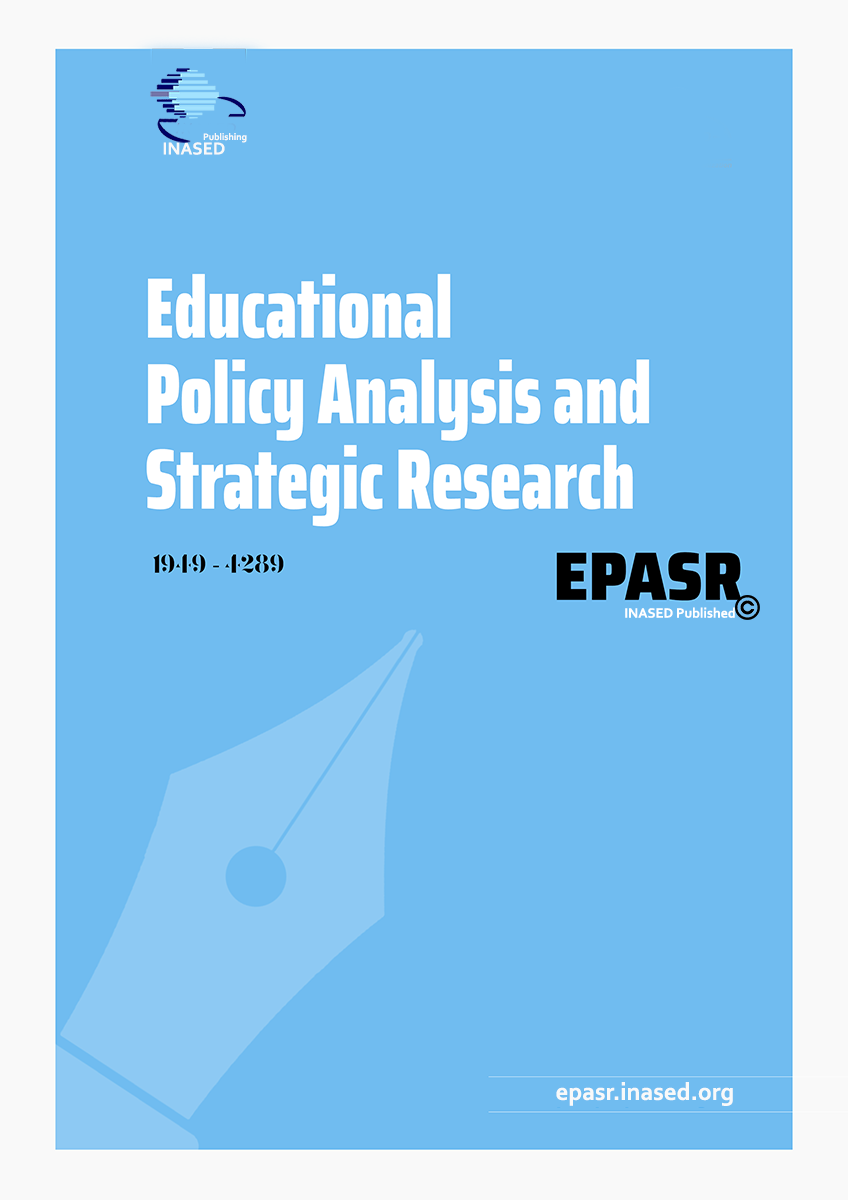- Acar, D., Tertemiz, N. & Tasdemir, A. (2018). Academic Achievement of 4th Graders in Science and Mathematics and their Views on STEM Training Teachers. International Electronic Journal of Elementary Education, 10 (4), 505-513. [Google Scholar]
- Angier, N. (2010). STEM education has little to do with flowers. The New York Times. Retrieved from http://www.nytimes.com/2010/10/05/science/05angier.html [Google Scholar]
- Antov, P. & T. Pancheva (2016). What is interdisciplinary team teaching and content and language integrated learning? Retrieved from http://cd.dictyon.net/Teacher-Manual-8. [Google Scholar]
- Appiah, S. O., & Agbelevor, E. A. (2015). Impact of Lecturers' Gender on Learning: Assessing University of Ghana Students' Views. Journal of Education and Practice, 6(28), 30-37. [Google Scholar]
- Aydın, G. & Şahin, N. (2018). Öğretmenlerin stem farkındalıkları: bir hizmetiçi eğitim çalışması. Erişim adresi: http://www.cizgikitabevi.com/kitap/855-ines-egitim-bilimleri-calismalari-2018 [Google Scholar]
- Bell, D. (2016). The reality of STEM education, design and technology teachers’ perceptions: a phenomenographic study. International Journal of Technology and Design Education. 26 (1), 61-79. [Google Scholar]
- Bybee, R. (2010). Advancing STEM education: a 2020 vision. Technology and Engineering Teacher, 70(1), 30–35. [Google Scholar]
- Corlu, M. S., Capraro, R. M., & Capraro, M. M. (2014). Introducing STEM education: Implications for educating our teachers in the age of innovation. Education and Science, 39(171), 74–85. [Google Scholar]
- Cuadra, E., & Moreno, J. M. (2005). Expanding opportunities and building competencies for young people: A new agenda for secondary education. Washington, DC: The World Bank. [Google Scholar]
- Czerniak, C.M., Weber, W.B., Sandmann, Jr., A., & Ahern, J. (1999). Literature review of science and mathematics integration. School Science and Mathematics, 99(8), 421–430. [Google Scholar]
- Dimitrov, D. M., & Rumrill, P. D. (2003). Pretest-posttest designs and measurement of change. Work, 20, 159-165. [Google Scholar]
- Dugger, W. E. (2010). Evolution of STEM in the united states. the 6th Biennial International Conference on Technology Education Research. (8-11 December), Gold Coast, Queensland, Australia. [Google Scholar]
- EL-Deghaidy, H., Mansour, N., Alzaghibi, M. & Alhammad, K. (2017). Context of STEM Integration in Schools: Views from In-Service Science Teachers. EURASIA Journal of Mathematics, Science & Technology Education, 13(6), 2459-2484. [Google Scholar]
- Eroğlu, S., & Bektaş, O. (2016). STEM-trained science teachers' views on stem-based course activities. Journal of Qualitative Research in Education, 4 (3), 43-67. [Google Scholar]
- Frykholm, J., & Glasson, G. (2005). Connecting science and mathematics instruction: Pedagogical context knowledge for teachers. School Science and Mathematics, 105 (3), 127-141. [Google Scholar]
- Furner, J. M., & Kumar, D. D. (2007). The mathematics and science integration argument: A stand for teacher education. Eurasia Journal of Mathematics, Science & Technology Education, 3(3), 185-189. [Google Scholar]
- Greenberg, M., Weissberg, R., O Brien, M., Zins, J., Fredericks, L., Resnik, H., et al. (2003). Enhancing school-based prevention and youth development through coordinated social, emotional, and academic learning. American Psychologist, 58(6/7), 466-474. [Google Scholar]
- Hacıömeroğlu, G. ve Bulut, A. S. (2016). Entegre FeTeMM Öğretimi Yönelim Ölçeği Türkçe Formunun geçerlik ve güvenirlik çalışması. Eğitimde Kuram ve Uygulama, 12(3), 654-669. [Google Scholar]
- Honey, M., Pearson G. & Schweingruber, H. (Eds.). (2014). STEM Integration in K-12 Education, Status, Prospects, and An Agenda For Research, Washington, DC: The National Academy Press. [Google Scholar]
- Jones, Casey (2009). Interdisciplinary Approach - Advantages, Disadvantages, and the Future Benefits of Interdisciplinary Studies. ESSAI, 7(26), 76-81. [Google Scholar]
- Larson, L. C., & Miller, T. N. (2011). 21st Century skills: Prepare students for the future. Kappa Delta Pi Record 47(3), 121–123. [Google Scholar]
- Lin, K. Y., & Williams, P. J. (2015). Taiwanese Preservice Teachers’ Science, Technology, Engineering, and Mathematics Teaching Intention. International Journal of Science and Mathematics Education, 14(6) 1-16. [Google Scholar]
- Moore, F. M. (2008). The role of the elementary science teacher and linguistic diversity. Journal of Elementary Science Education, 20(3), 49–61. [Google Scholar]
- National Academy of Engineering and National Research Council. 2014. STEM Integration in K-12 Education: Status, Prospects, and an Agenda for Research. Washington, DC: The National Academies Press. [Google Scholar]
- Ostler, E., (2012). 21st century STEM education: a tactical model for long-range success. International Journal of Applied Science and Technology, 2(1), 28- 33. [Google Scholar]
- Pimthong, P. & Williams, J. (2018). Preservice teachers’ understanding of STEM education. Kasetsart Journal of Social Sciences, 16 (2), 1-7. [Google Scholar]
- Siew, A. (2015). The perceptions of pre-service and in-service teachers regarding a project-based STEM approach to teaching science. SpringerPlus, 4 (8), 1-20. [Google Scholar]
- Srikoom, W., Hanuscin, D. & Faikhamta, C. (2017). Perceptions of in-service teachers toward teaching STEM in Thailand. Asia-Pacific Forum on Science Learning and Teaching. 18 (2), 1-23. [Google Scholar]
- Tsupros, N., Kohler, R., & Hallinen, J. (2009). STEM education: A project to identify the missing components. Intermediate Unit 1: Center for STEM Education and Leonard Gelfand Center for Service Learning and Outreach, Carnegie Mellon University, Pennsylvania. [Google Scholar]
- Uğraş, M. & Genç, Z. (2018). Investigating Preschool Teacher Candidates' STEM Teaching Intention and the views about STEM Education. Bartın University Journal of Faculty of Education, 7(2), 724-744. [Google Scholar]
- UNESCO (2017). Cracking the code: girls' and women's education in science, technology, engineering and mathematics (STEM), UNESCO Publishing. [Google Scholar]
- Wang, H., Moore, T. J. Roehrig, G. H. & Park, M. (2011). STEM Integration: Teacher Perceptions and Practice. Journal of Pre-College Engineering Education Research, 1 (2), 1-13. [Google Scholar]
- Yıldırım, B. & Türk, C. (2017). Prospective classroom teachers' views on stem education: an applied study. Trakya University Journal of Education Faculty, 8 (2), 195-213. [Google Scholar]
|


